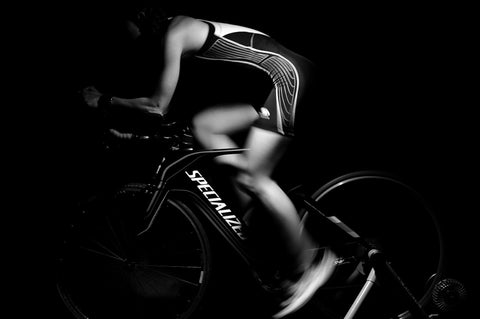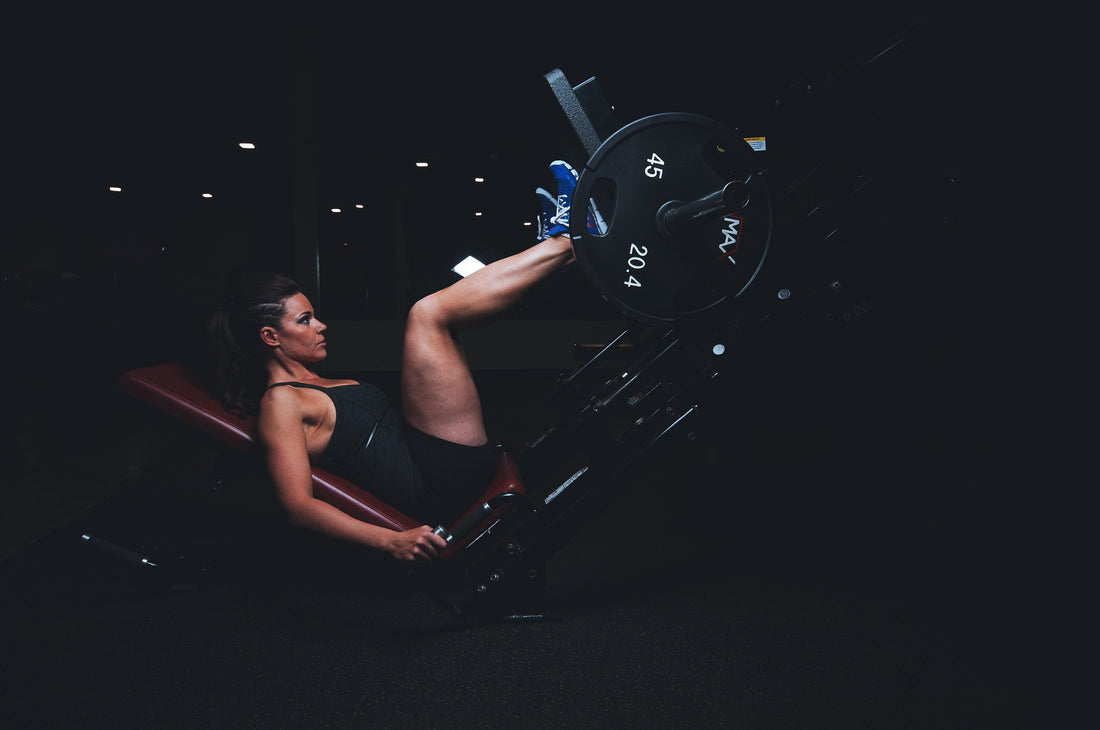Everyday I work with online and in person clients who want to develop their legs —particular quadriceps—in a short period of time.
But how can this be done?
While it varies with every individual based on medical conditions,
This article covers some of the most common questions I receive about strengthening and building leg muscles such as:
- What are the best quad strengthening exercises?
- Will training legs accelerate fat loss?
- How do I get tear drops quickly?
- Should I be doing more squats or more deadlifts?
- What is the science behind effective quadriceps training?
- How can I strengthen my knee after injury or with some arthritis?
Let's get started.
How to Build Stronger Legs Quickly: Introduction

Why is it that we are able to devote hours on end in the gym chiseling our upper body, but every time leg day comes, everyone either has knee problems or they have to go get medicine for their dog?
This is the real talk people, if you want a chiseled, well-rounded physique, you have to give your legs as much (probably even more) attention as you give your chest and biceps!
What is the single most ridiculously unappealing thing about a man’s body? I’ll give you a hint; it’s not the beer gut. It’s his chicken legs.
In the following, we are going to be talking about the science behind strengthening the biggest muscle in your leg, how to strengthen knee after injury, and how to combine training methods of quad and hamstring training for maximum results.
Let’s dig into everyone’s least favorite topic - leg training science.
The Anatomy of the Quadriceps Muscles
As your logical deduction might have led you to believe, the quadriceps muscle comprises of a group of individual muscles, these are:
- Rectus Femoris
- Vastus Lateralis
- Vastus Medialis (which includes the coveted vastus medialis oblique, or VMO)
- Vastus Intermedius
Interestingly enough, there is a new research on the quadriceps suggesting that there might be a fifth muscle involved, so maybe this isn’t the correct term anymore.
The job of the quadriceps muscles is to hip flexion and knee extension. This means that the quads are responsible for bending the hip joint as well as straightening the knee joint.
In order to prevent knee injury and to have a strong, rigid body, you need to develop a big set of wheels.
So let’s move on to the science behind quad training.
Science of Effective Quadriceps Training

Your legs are a big muscle group. Quads are a big muscle group. Think of your hamstrings as your chest and quads as your back. Would you hit each and every muscle of your back with isolation exercises for god knows how many reps and sets? Probably not, because there isn’t enough time in this life to hit every muscle in the back.
The same goes for quadriceps.
While you might hear and read various and more often than not, opposing opinions on how to effectively train the quads, the simple truth is the same as with any huge muscle group:
- Compound movements build the most amount of strength and muscle
- Back squats and front squats are the best exercises for quads
- Assistance movements will be required for maximum development
- Lifting heavy once a week for a specific compound movement is usually enough
Quad Training Types and the Best Quadriceps Exercises
We are going to be looking at two types of quadriceps training:
- Compound movements
- Isolation/assistance exercises
Compound movements will build muscle and CNS strength, and you will perform them in a low rep range, usually 4-6 for 5 sets.
Conversely, assistance work will serve as added time under tension and will add to the overall weekly volume spent training the muscle group. These will be performed in a moderate rep range, usually 8-12 reps for 3 sets.
These are also excellent quad strengthening exercises for runners and other performance athletes.
Remember, volume and frequency are key in addition to progressive overload, so you will need to abide by the laws of muscle and strength progression.
The Barbell Back Squat
The king of all exercises, the back squat!
Undoubtedly, one of the best mass and strength building exercises for your entire body, with emphasis on the quads, hamstrings, and glutes. Don't skip it.
There are two ways you can perform the back squat:
- The High Bar Squat
- The Low Bar Squat
When performing the high bar squat you will place the barbell on top of your trapezius muscles and you will be able to keep a more upright stance.
This type of squatting is mostly used by Olympic weightlifters.
Some quick tips for the high bar squat:
- Place the bar on top of the traps
- Grip the bar as narrow as you can and squeeze the lats
- Keep the chin neutral, chest flat
- Feet slightly more than hip-width apart, toes pointed out at 30°
- Take a deep belly breath at the top of the movement and hold until the next rep
- The bar must travel in a straight line
On the other hand, the low bar squat is the preferred technique for almost every powerlifter on the planet, simply because the low bar position will allow you to exert more force and you will most likely find that you are stronger using this technique.
- Place the bar on top of your rear deltoids
- Repeat all of the other steps from the high bar squat
The Barbell Front Squat
One of the best exercises in the world for emphasizing the quadriceps is definitely the front squat.
This exercise is perfumed the same way as the back squat, but this time you will place the bar on top of your front deltoid and you will be holding it with a crooked grip using two or more fingers.
Repeat the steps for the back squat.
Dumbbell and Barbell Lunges
Contrary to popular belief, the lunge is not an isolation exercise, it is, in fact, one of the best compound leg exercises in the world. It will hit you quads, hamstrings, and glutes.
Make sure to do these in the moderate rep ranges for maximum benefits and quad development.
Grab a pair of dumbbells or put a barbell on your back, and start walking.
The Leg Press
This is an exercise for mass and it’s all about steady contraction and overload.
Because it’s done on a machine, you are able to put a lot of weight and execute full range of motion.
A Case for Combining Quadriceps and Hamstring Training
Although the quads do make the majority of your leg muscles, in order to build strong and completely developed legs, you need to combine hamstring training as well.
Luckily for you, this doesn’t mean spending a ton of time isolating the hamstrings as all of the exercises mentioned above are going to build the hamstrings and the glutes as well.
Remember, the glutes are one of the most important muscle is your body, as they will determine the strength of your squat, deadlift and will greatly affect your bench press and overhead pressing movements!
Finally, let’s mention how to strengthen knees after injury as well as some other final notes on quad injuries and recovery.
Possible Quad Injury and How to Avoid it
One possible injury that could occur due to high stress and improper form is tearing in the quadriceps. Now, this can vary in severity from mild muscle tears that require a bit of stretching and foam rolling to complete muscle tears.
Although you should know that quadriceps tears are very rare (the quads have a very high-stress limit), you should always remember to stretch, foam roll after a workout and execute proper form during lifts.
This will keep the quadriceps away from danger and will prolong your lifting career.
Strengthening Legs Quickly: Summary
Quad strengthening exercises are the cornerstone of every leg and lower body workout. Using these exercises and training strategies you can strengthen your legs, even with existing injuries and ailments that would otherwise hinder your progress.
Need help building stronger legs?
Click here for more detail on how to maximise leg training strategies to build muscle while losing fat at the same time. Click here if you need help maximising your leg training sessions in person in Adelaide CBD with Head Coach at Hustler Fitness, Daniel Burford.




